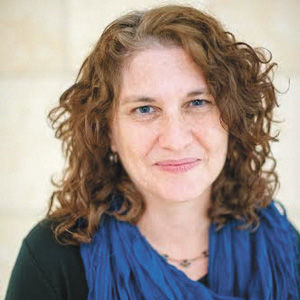Bringing the marginalized back home
Published April 11, 2019
On Shabbat Hagadol, which immediately precedes Passover, we read from the Haftarah of Malachi in which God promises to send Elijah the prophet before the coming of the “great (gadol), awesome day of the Lord” (Malachi 3:23). On the night of the Passover seder, we will set out a cup of wine and open the door with hope that Elijah will come that very night. The stories we have told of Elijah, in which the prophet appears in surprising and often humble places and form, have laid the foundation for our expectation that our own humble homes may be the next stop on Elijah’s world tour.
One such story comes from the Babylonian Talmud Sanhedrin 98a. Rabbi Joshua ben Levi found Elijah standing at the entrance of Rabbi Shimon bar Yochai’s burial cave. Joshua asked him, “When will the messiah come?” Elijah said go and ask him yourself, for he could be found at the entrance of the gates of the city. Joshua asked how he would he recognize him. Elijah answered, “He sits among the poor who suffer from illnesses. And they all untie and tie all their bandages at once, but the messiah unties and ties one bandage at a time — lest he will be needed — so that he will not be delayed. At the city gates, the messiah tells Joshua that the master will come “today,” which Elijah helped interpret for him as meaning that the master would come “today, if you will listen to [God’s] voice.” (Psalm 95:7)
Elijah helps people to see what they often fail to see; in this case, that the messiah is already here but in a place where we would not only never think to look but in a place that we fear and loathe. In this week’s Torah portion, Metzora, we continue reading about afflictions of the skin and other places of boundary (clothing, walls). The focus, though, is on the kohen, the priest, who is described as “seeing” in order to identify the nature of the affliction and to know when the time is right to reintegrate the metzora — the one afflicted with tzara’at — back into the community.
The verb “to see” appears repeatedly in this section of Torah. Rabbi Aryeh Cohen brings a teaching from Rabbi Mordecai Yosef Lainer, the Ishbitzer rebbe, to suggest that it is this ability to see in a particular way that is the very definition of acting as a kohen. He writes that the kohen “is the aspect of discernment that is present in each of us in potential. It is through service and devotion that we can actualize this potent ability of discernment, which is called the Kohen. The Torah is teaching us then about discernment … about the importance of paying enough attention to be able to actually see what we are seeing.” (“You Can Only See What You Can See,” http://bit.ly/dvar-link).
One of the rituals of reintegration into the community of the healed metzora is the same rite that initiates the kohanim into their service: Blood and oil are placed on the right ear, the right thumb and the right big toe. The one who has been cast aside and brought back enters into holy service. She has the eyes to see what others may not, empathetic and discerning eyes to see those who have been marginalized and to know how to bring them back home.
As Jews, may we take our experience as people who know the heart of the stranger and use it to raise our own consciousness of alienation wherever we find it, and nurture our ability to discern and see like the mamlekhet kohanim, the kingdom of priests, we are meant to be.
Rabbi Tracy Nathan is senior educator and director of Melton at the Center for Jewish Learning at Jewish Federation of St. Louis. She is also secretary of the executive committee of the St. Louis Rabbinical Association, which coordinates the weekly d’var Torah for the Jewish Light.















